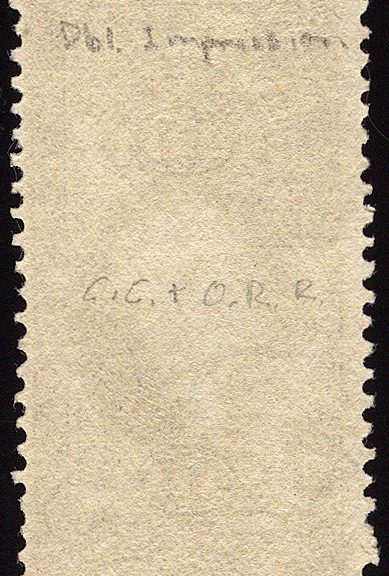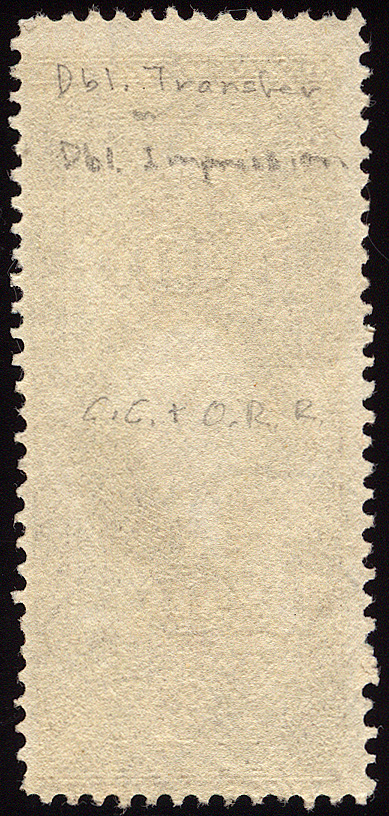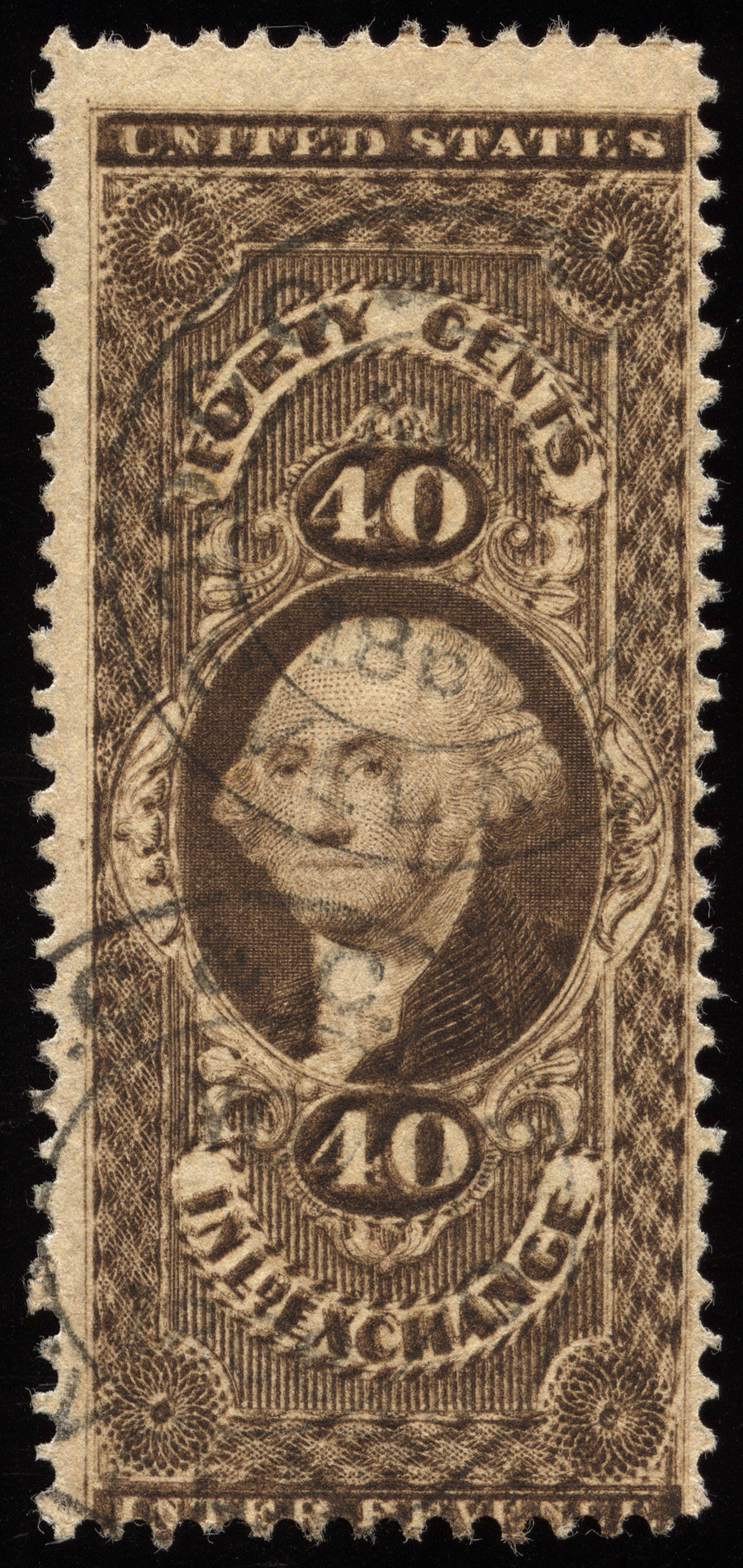
Oh my. This was unexpcted…
The last several nights, I’ve been going through the smaller of the two bulk lots I got at CHICAGOPEX, pulling items to sell to a collector who plates various 1st issue revenues. I didn’t find anything spectacular, just a few silk papers and a few very minor double transfers.
I finished up with that lot and tonight I started on the big lot. Throughout the entire 12 volumes are various and sundry stamps turned face down with pencil notations on the back. I really didn’t pay any attention to them when evaluating the lot, nor did the seller.
The very first page I start working on, R53c, had the following stamp face down.
I was expecting one of the R53 double transfers with doubling of the letters in the top scroll. Instead I was greeted by the following stamp. Listed but unvalued in Scott.
Hard to imagine an identified item like this just stuck in a bulk stockbook. Makes me think I’m going to have to take my time and pay very close attention as I go through the rest of the lot…
From Bart Rosenberg:
Based on this scan my inclination is to call it an allover double transfer, in part because the lines at the very top from the stamp above do not appear to be doubled, which they would be if it was a double impression. Also although the right outer frame line is doubled, the left frame line does not appear to be. I suspect that a really close look would find some other lines that are not doubled as well. Great stamp.
Follow-up: Since there was a difference of opinion as to double impression vs. double transfer, I contacted Brian Bleckwenn at the Philatelic Foundation, one of the foremost experts on 1st issue revenues, to find out (1) whether the PF has ever certified an R53f (double impression) and if so was there an image available, and (2) what his opinion was of the stamp in question.
His opinion introduced a third option: a kiss impression rather than a double impression. With a true double impression, the sheet passes through the press twice, whereas a “kiss print” or “kiss impression” is due to slippage of the paper causing the second impression (most front-of-book listed double impressions are kiss prints, not true double impressions). Based on this stamp exhibiting doubling of most features, but not the majority of the portrait, this diagnosis makes sense.
For it to be a double transfer, there would have to be a second example from the same plate position confirming the constant plate flaw.
So it’s not the home run I thought it was, but it’s still a dramatic appearing EFO.
UPDATE
After comparing this stamp with the Scott listing example, I became more convinced than ever that this was a real double impression. The company cancel is the same on both stamps. I subsequently submitted it to the Philatelic Foundation, where it received certification as an R53f, double impression. It is only the second certified example.

